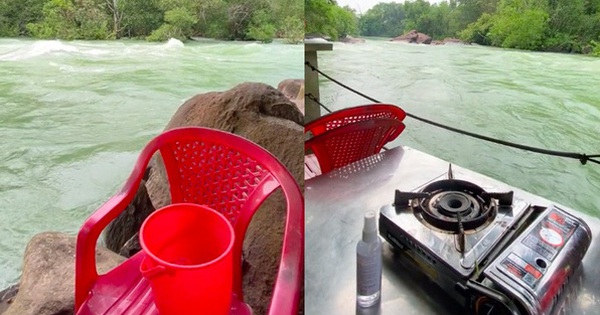In fact, the tree image Bifrost . bridge just a metaphor for the extraordinary beauty of these bridges. These frozen lighthouses in Michigan could easily be mistaken for some scenes from the disaster movie The Day After Tomorrow.
After the storm passed, and under the pressure of extremely low temperatures, these lighthouses were transformed into giant icebergs. And it was captured by American photographers Thomas Zakowski and Tom Gill during a trip to two cities in Michigan after a hurricane made landfall in the state.
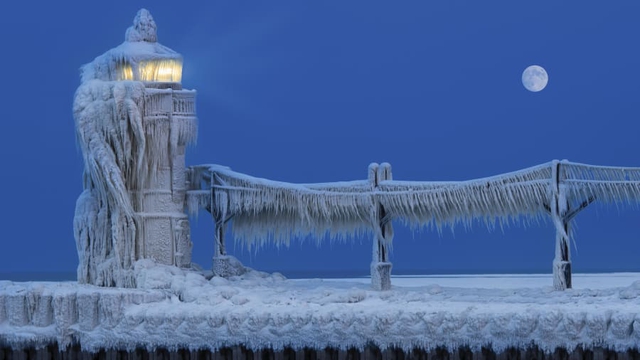
Lake Michigan is one of the Five Great Lakes of North America, and the only one of the five to lie entirely within the United States. It borders, from west to east, the following states: Wisconsin, Illinois, Indiana, and Michigan. The word “Michigan” was originally used to refer to the lake itself, and it is believed to be derived from the Native American word Ojibwa mishigami, which means “great lake”. The lake has an area of 58,016 square kilometers and is also the largest freshwater lake in the United States, the largest lake located entirely within a country (by surface area; Lake Baikal in Russia, the largest by volume). The lake is 494 km long and 190 km wide with a shoreline of 2,633 km long. The average depth of the lake is 85 m, while the deepest place is 281 m.
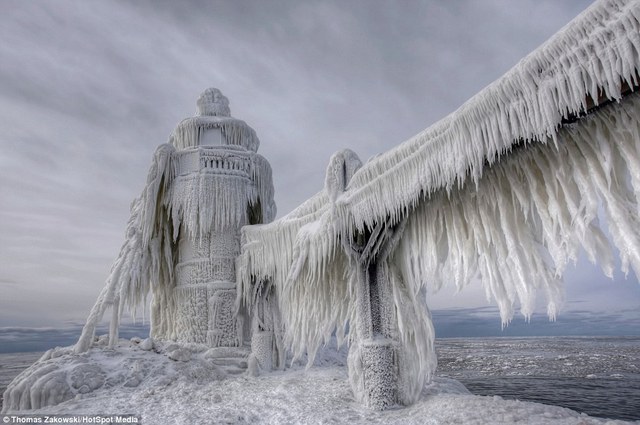
Pictures of the “freezing” scene of the lighthouse in the Michigan area went viral on social media sites. Many people also compare that its beauty is like the Bifrost bridge in real life. But there are also others who claim that the ice caps that cover the St Joseph’s lighthouse on Lake Michigan make it look like the magical Arendelle from the Disney hit. The image of the spiral lighthouse with icing cracks around it against the snowy sky turned the scene into an almost mystical scene. Tom Gill’s favorite lighthouse is the St. The 11-meter-tall Joseph was built in 1844. This lighthouse is often covered with thick ice during winter storms when waves as high as 6 meters crash against the piers and the air temperature drops to minus 20 degrees Celsius. .
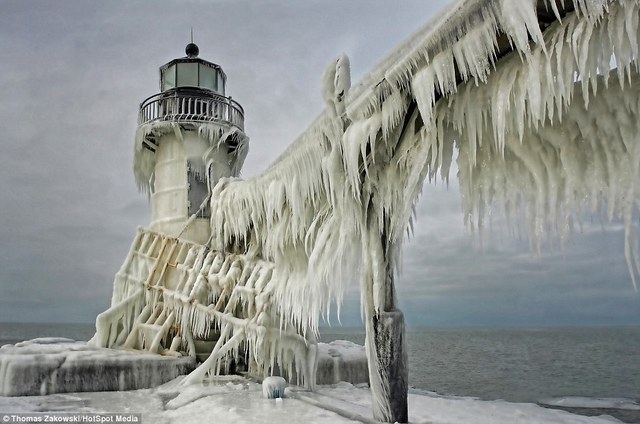
For many years, these two photographers have traveled to Michigan to photograph the ice sculptures. Gill says he often has to wait for the perfect conditions for these ice formations to take place. Taking pictures of the “frozen lighthouse” is part of Gill’s Christmas break. He spent the first day of his trip stopping in South Haven, Michigan, as well as a variety of makeshift structures. In a time that nature bestows upon humans as the seasons change, Tom Gill admits it feels dangerous to visit these frozen lighthouses.As the weather warms, these sculptures will fade away. The word disappears like Iceland’s ever-changing crystal cave system.
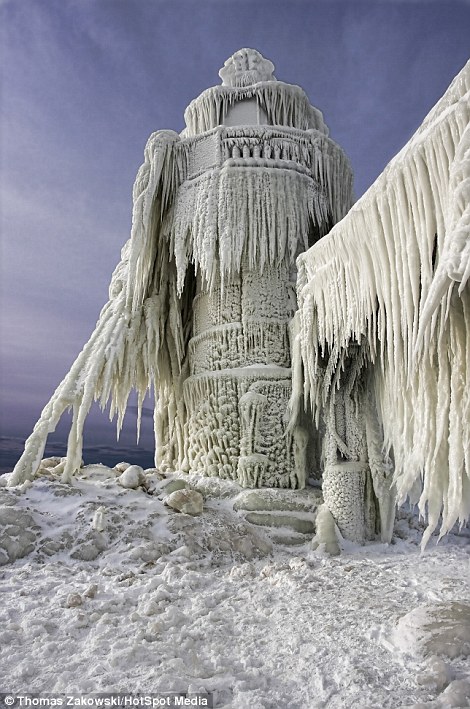
Perhaps when coming here in winter, visitors will hardly recognize the lighthouses. The frost has turned them into amazingly beautiful sculptures. Gill’s favorite lighthouse is St. Joseph, 10.6m high, built in 1844. During winter storms, waves up to 6m high from Lake Michigan hit the lighthouse with a thick layer of ice. With countless unique shapes, the lighthouse is like stalagmites in stalactite caves, so beautiful. At this time, the temperature in the lake is only minus 20 degrees. The outer lighthouse is 30m higher than the inner light and there is only a road about 0.6 – 0.9m wide between the lighthouse and the cold lake bed. Due to the snow cover, this path is very slippery. Photographer Tom Gill shared: “This year many people ventured to the outside light, but no one dared to go around because of the strong wind.”
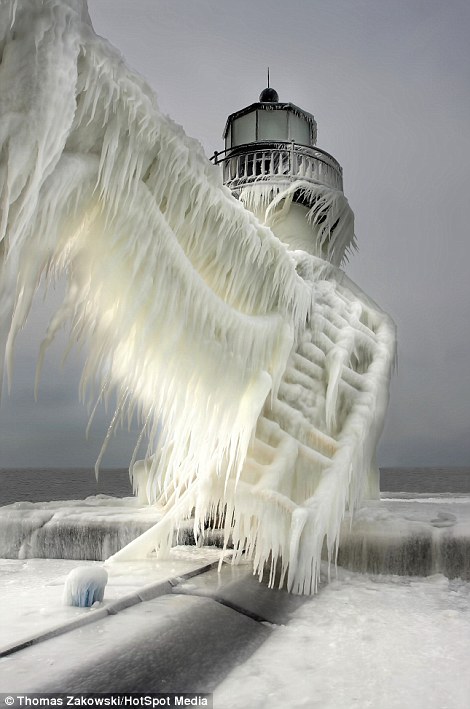
Michigan has more lighthouses than any other state in the US, and many of those lighthouses are now considered historic sites. In the old days, these lighthouses warned sailors of dangers and guided them through treacherous waters to safety. If you need an idea for a winter trip, wait until the temperatures drop really low and head to Michigan to see its snow-capped lighthouses. The frozen lighthouses create a fairy-tale scene.
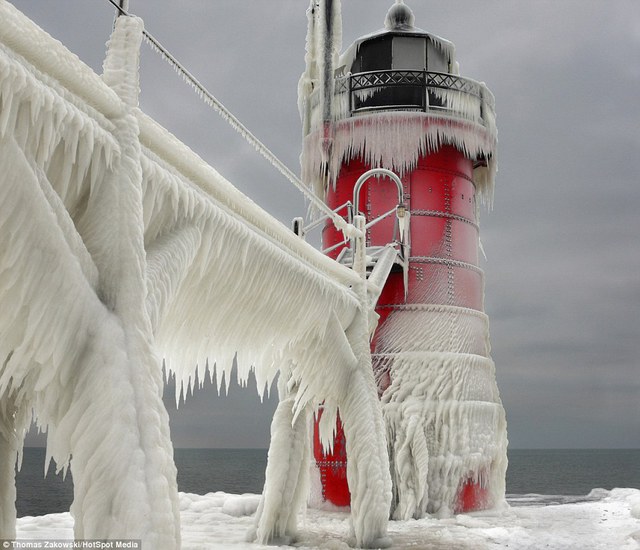
“Depending on the weather of each year, lighthouses can be frozen for a few weeks to more than a month,” says Thomas Zakowski. “The beauty of these seas will vary from year to year, and that’s exactly what I’m looking forward to. To get there you’ll have a bit of a hard time, because first you have to find your way. off the pier”. “Although my photos attract a lot of positive attention, that’s not the main reason why I took these photos. I simply did it for my own enjoyment.”
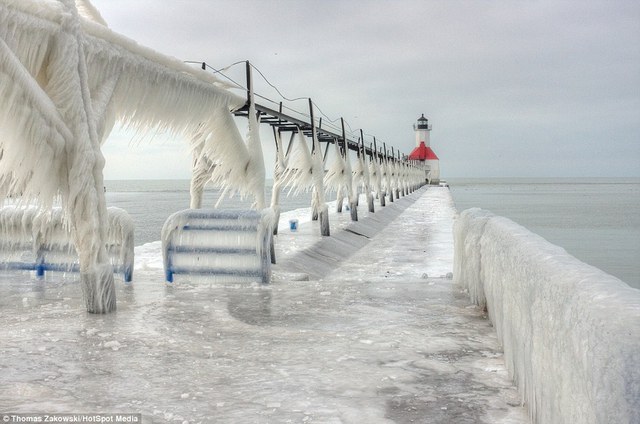
According to hydrometeorologists, the phenomenon of lighthouses being covered with snow is not too strange because the Lake Michigan area is usually the coldest place in winter. Strong winds and waves will easily make them covered with ice and snow.” The image of “Freezing Lighthouse” is still being shared a lot on social networking sites around the world.
at Blogtuan.info – Source: Soha.vn – Read the original article here
